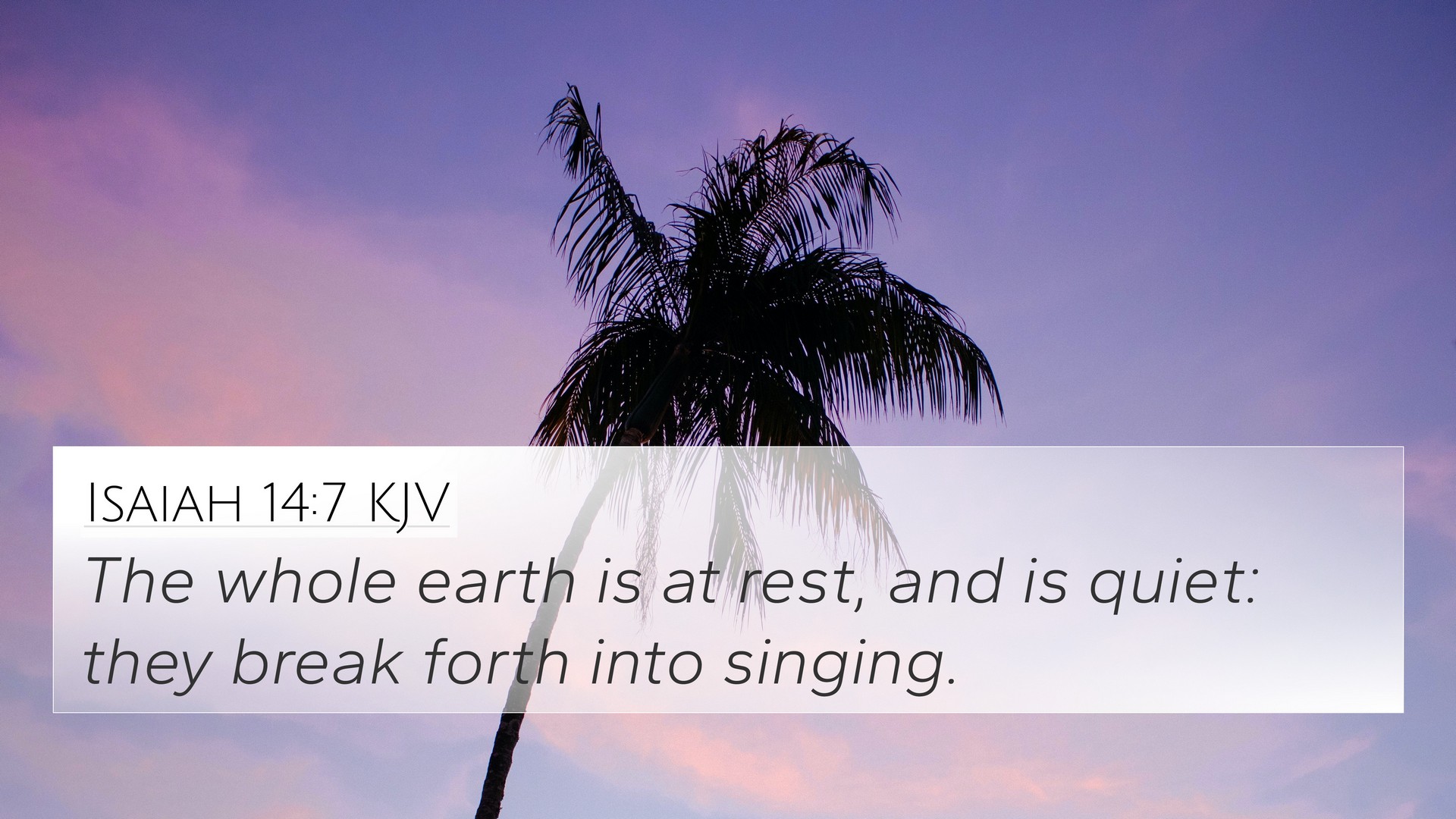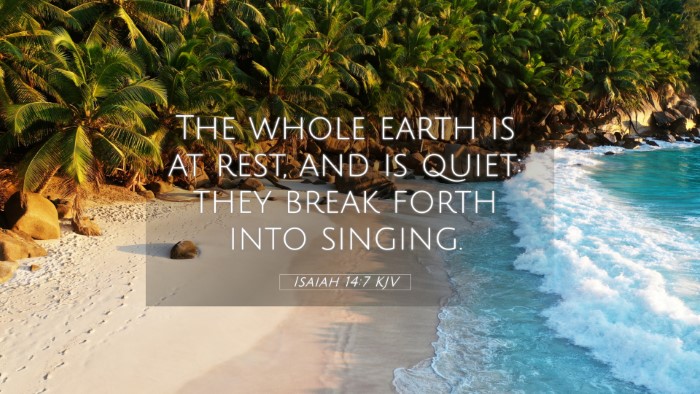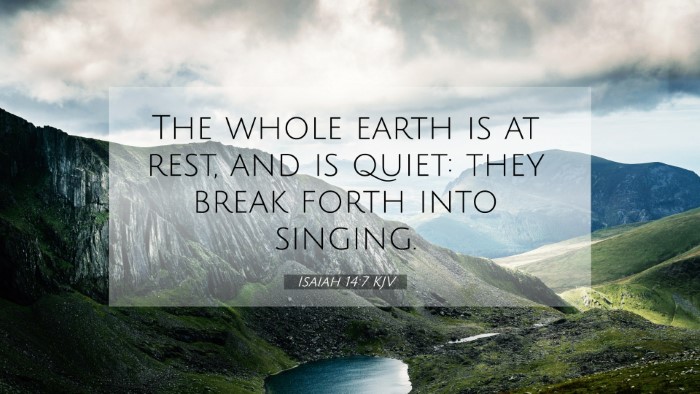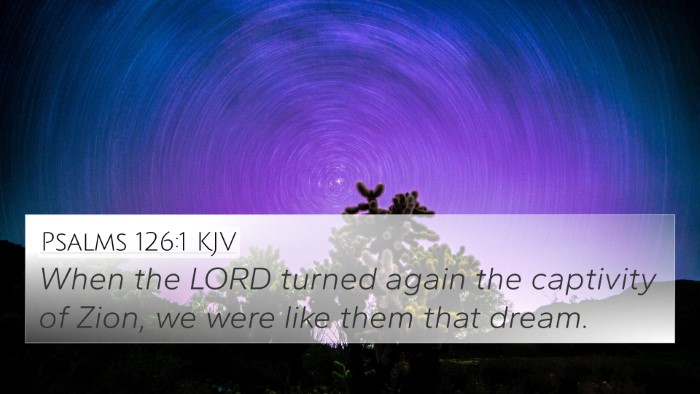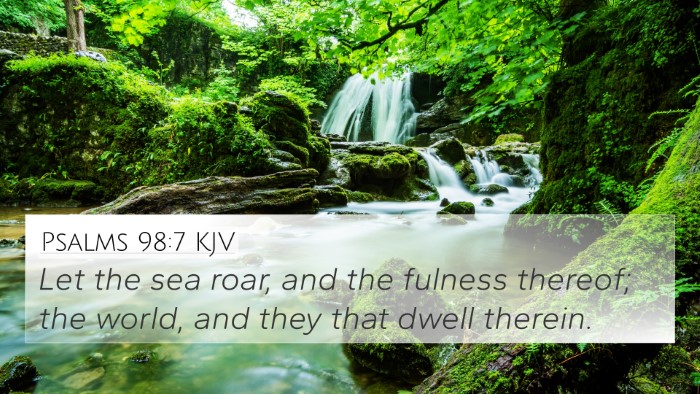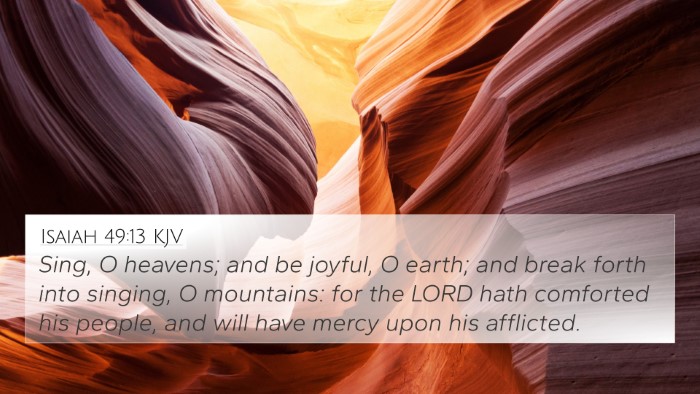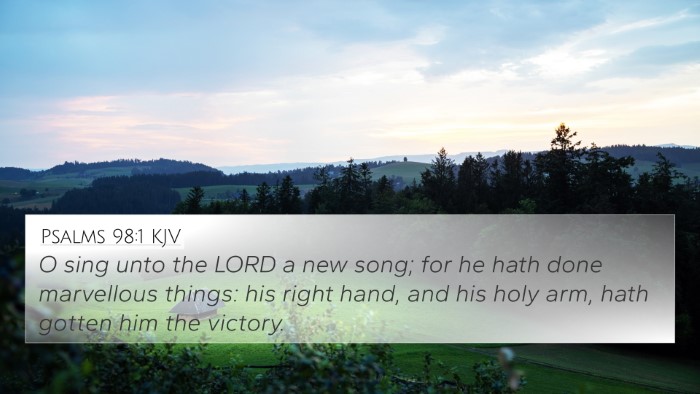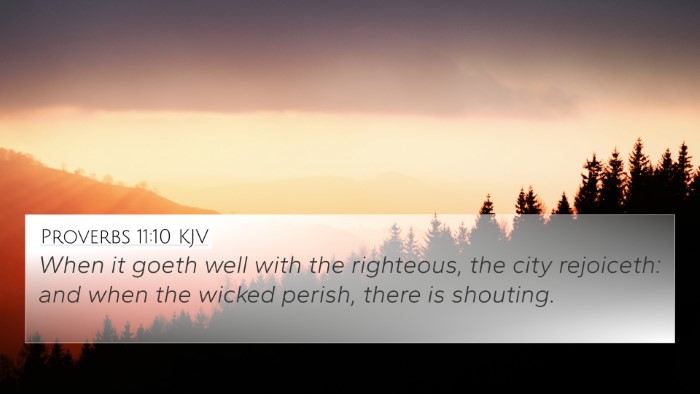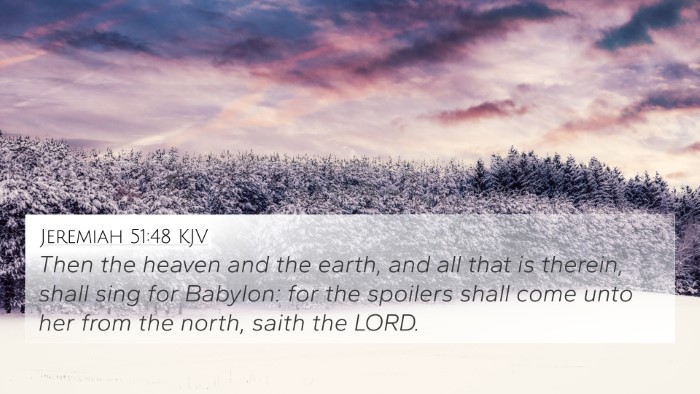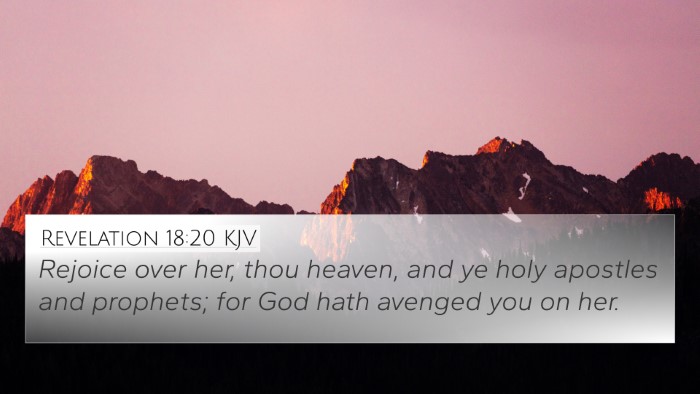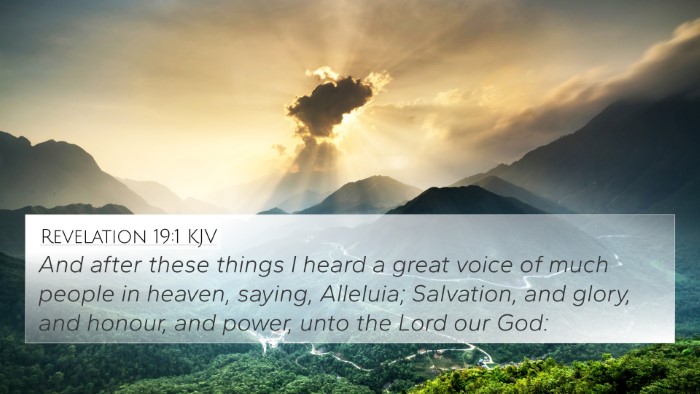Understanding Isaiah 14:7
Verse Context: Isaiah 14:7 states, “The whole earth is at rest and quiet; they break forth into singing.” This verse is part of a passage that speaks to the downfall of the king of Babylon and the peace that follows his demise.
Interpretation and Meaning:
This verse reflects a significant shift from chaos to tranquility following the end of tyranny. The use of the term “whole earth” suggests a universal peace that encompasses all creation.
Matthew Henry's Commentary:
Henry elaborates that the cessation of oppression brings a joyful response from the earth. When the oppressors are removed, even nature itself seems to rejoice, highlighting the connection between divine justice and the resulting peace.
Albert Barnes' Commentary:
Barnes points out that the imagery of the earth resting and quieting signifies a deep, spiritual rest that comes from the Lord's intervention. This invokes a sense of hope, illustrating that when the wicked are removed, harmony is restored.
Adam Clarke's Commentary:
Clarke emphasizes the collective joy that all of creation experiences. He notes that in times of trial, such peace may seem distant, but it anticipates the Messianic age when true peace will prevail.
Cross-References
This verse can be understood in context through various Biblical cross-references:
- Revelation 21:4 - God shall wipe away all tears, indicating a future peace.
- Isaiah 11:9 - The earth will be full of the knowledge of the Lord, equating peace with divine awareness.
- Zephaniah 3:17 - The Lord rejoices over His people, leading to a state of quietness.
- Romans 8:19 - Creation waits expectantly for the children of God, hinting at a restored order.
- Psalms 96:11-13 - Nature rejoices and sings when the Lord judges the earth.
- Isaiah 35:1-2 - The wilderness and the solitary place will be glad, emphasizing creation's joy.
- Psalms 65:12-13 - The valleys are covered with corn; they shout for joy and sing.
Thematic Connections
The verse relates to several themes throughout Scripture:
- Divine Justice: The ease of the earth after the fall of Babylon represents God's ultimate judgment on evil.
- Restoration: This verses connects with the overall theme of restoration that permeates both the Old and New Testaments.
- Nature's Response to God’s Will: The anthropomorphism of creation expresses a theme that runs through scripture; nature responds to God's actions with joy.
Tools for Bible Cross-Referencing
Understanding the intricate connections within the Bible can greatly enhance your study. Consider these tools:
- Bible Concordance: A comprehensive guide to finding cross-references.
- Bible Cross-Reference Guide: Helps in identifying verses that relate to each other.
- Bible Reference Resources: Tools that allow you to see thematic connections across the Bible.
Researching Cross-References
For those interested in how to engage with scriptures effectively, the following practices can be useful:
- Cross-Referenced Themes: Helps identify patterns and repeated messages throughout the Bible.
- Comparative Bible Verse Analysis: When studying verses in parallel provides deeper understanding of context and meaning.
Conclusion
Isaiah 14:7 offers profound insights into the peace that follows divine judgment and reflects a deep connection with other Biblical promises of joy and restoration. Engaging with the cross-references enhances our understanding of God’s overarching narrative and the intricate links between various scriptures.
